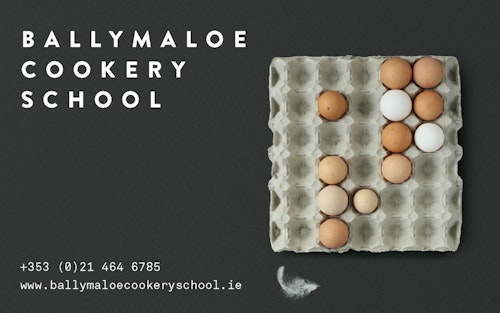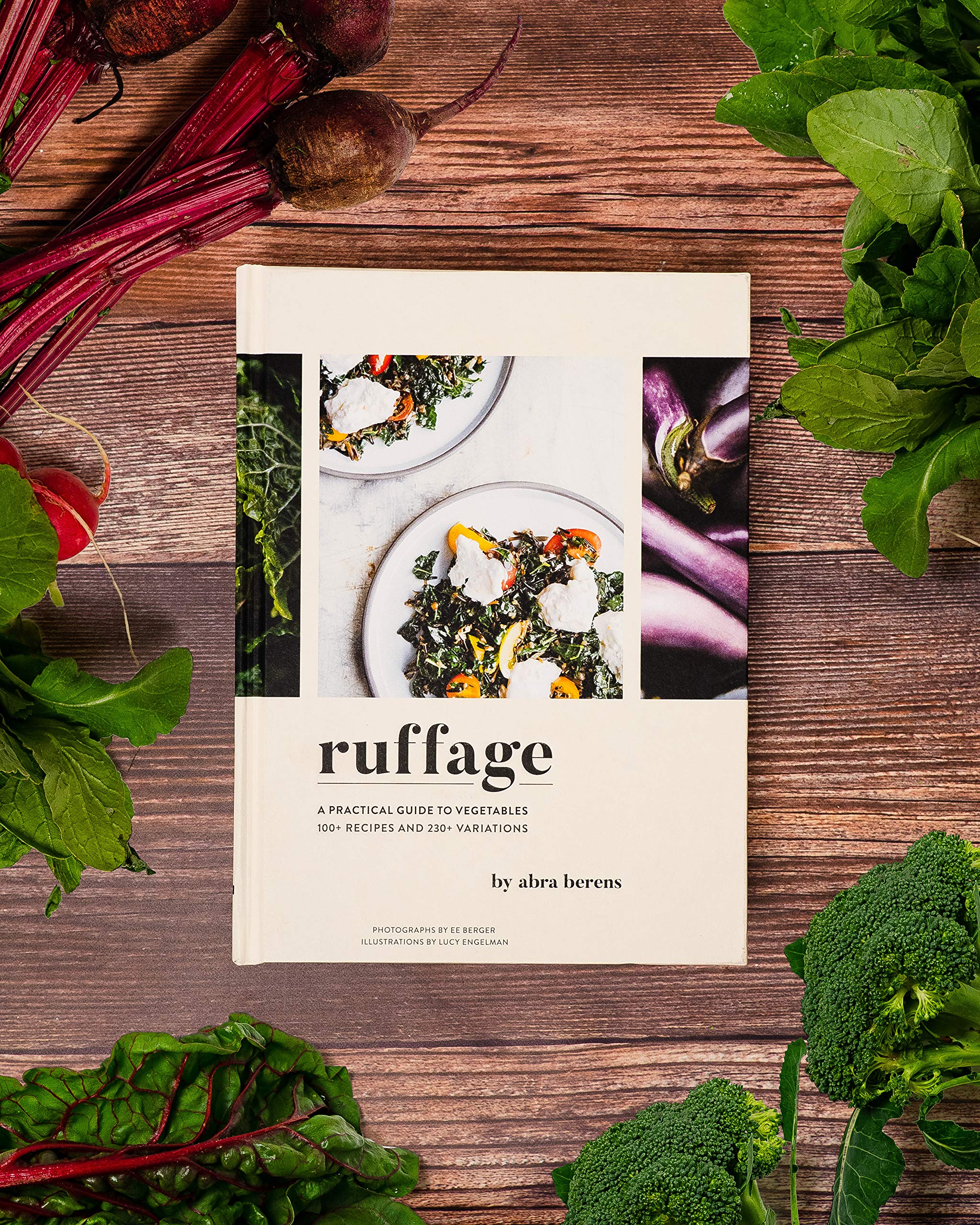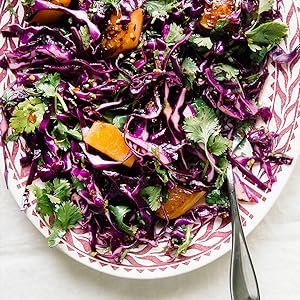A few weeks ago we flew from Cork Airport to Bristol, hired a car and headed for Devon and Cornwall. I’d forgotten how beautiful the English countryside can be, the abundance of wildflowers in the hedgerows and so many beautiful mature trees. One can’t but draw comparison to our Irish countryside, so often denuded of hedgerows and with so few mature trees. Of course it depends on the area in both countries but I’m becoming ever more alarmed at the wanton disregard for the environment.
We had booked a few nights stay at Coombeshead Farm near Lewannick in Cornwall, a ‘farm to fork’, guest house with just five bedrooms owned by chefs Tom Adams and his partner April Bloomfield.
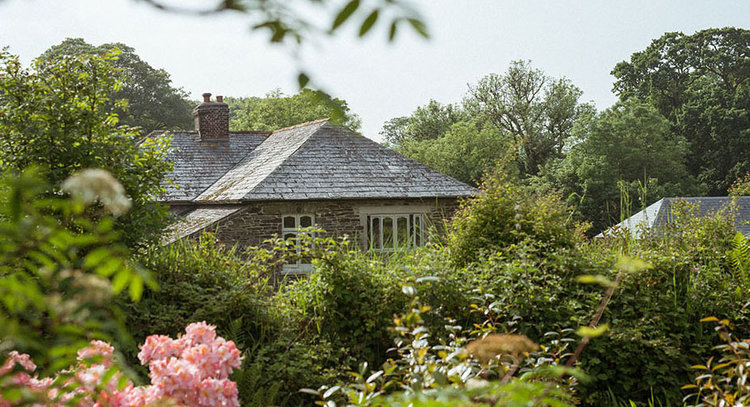 |
| Image: https://www.coombesheadfarm.co.uk/gallery |
We arrived tired and hungry and felt instantly at home. The bedrooms are small by most hotel standards but charmingly decorated with a homemade soap made from the lard of their own pigs, a little decanter of mint vodka to sip and two pieces of homemade toffee to share or argue over. The house is surrounded by organic gardens in a working farm with vegetable and herb gardens and a flock of heritage chickens.
The farmhouse is in the midst of 66 acres of woodlands and meadows grazed by sheep, there are beehives and a wood burning oven and a fire pit. Curly haired Mangalitsa pigs romping and rooting around the fields underneath the oak spinney behind the house. The bread is made in the ‘state of the art’ bakery in the barn by Ben Glazer, beautiful dark crusty loaves of natural sour dough that also make their way to some of the top restaurants in London.
 |
| Image: https://www.coombesheadfarm.co.uk/gallery |
The food is super delicious, we stayed for three nights and looked forward to each and every meal with eager anticipation. The atmosphere feels like a house party, comfy sofas, crackling fires - guests tend to congregate in the kitchen around the stove.
 |
| Image: https://www.coombesheadfarm.co.uk/gallery |
Breakfast each day was a simple feast, dark crusty sourdough bread with homemade Guernsey butter, compote of seasonal fruit - rhubarb, apple, gooseberry with elderflower, raw honey, homemade jams, granola, bircher muesli, gut boosting water kefir, kombucha and gorgeous unctuous yoghurt. A most fantastic slab of fine home cured streaky bacon and homemade sausages from the happy rare breed Mangalitsa pigs with a soft flowing scramble of their own eggs.
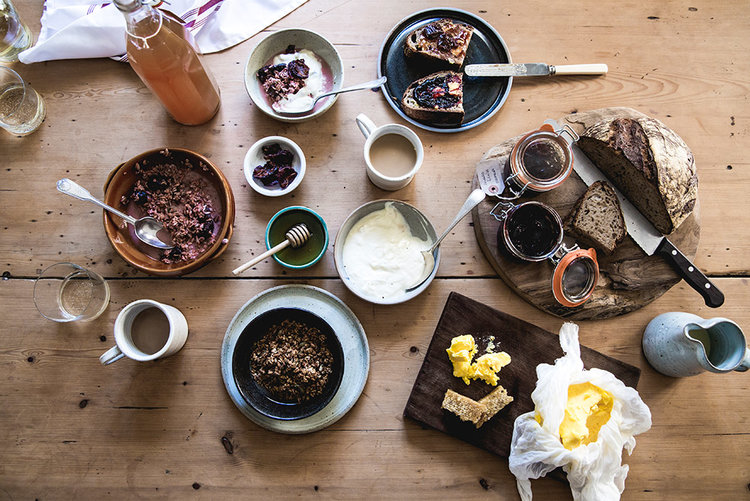 |
| Image: https://www.coombesheadfarm.co.uk/gallery |
Lots of pickling, fermenting, curing and preserving. Small plates of creative, flavourful real food. No silly foams, gels or skid marks on plates.
Here these young people are really ‘walking the walk’, not just ‘talking the talk’ as so many places do, skilled, accomplished earthy organic food, locally sourced and seasonal.
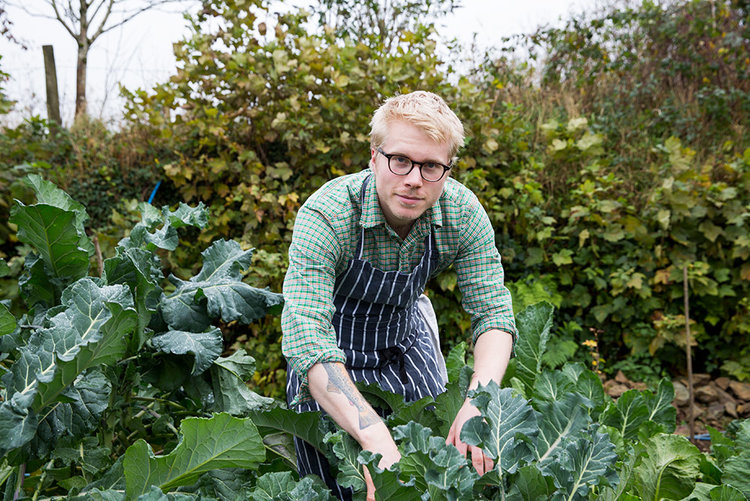 |
| Image: https://www.coombesheadfarm.co.uk/gallery |
The menus sang of the season and the produce picked at its peak from the vegetable garden and hedgerows - zero miles food. I’m licking my lips remembering some of the flavours still so vibrantly fresh in my mind: Country loaf and Guernsey butter, new season's asparagus wrapped in crispy filo parcel, garlic scapes and Jack of the Hedge, pickled ramson and cabbage terrine, curds and nettle, Mangalitsa loin and turnip, hazelnut tart with fresh cream… you’ll just have to go there yourself to experience the magic!


